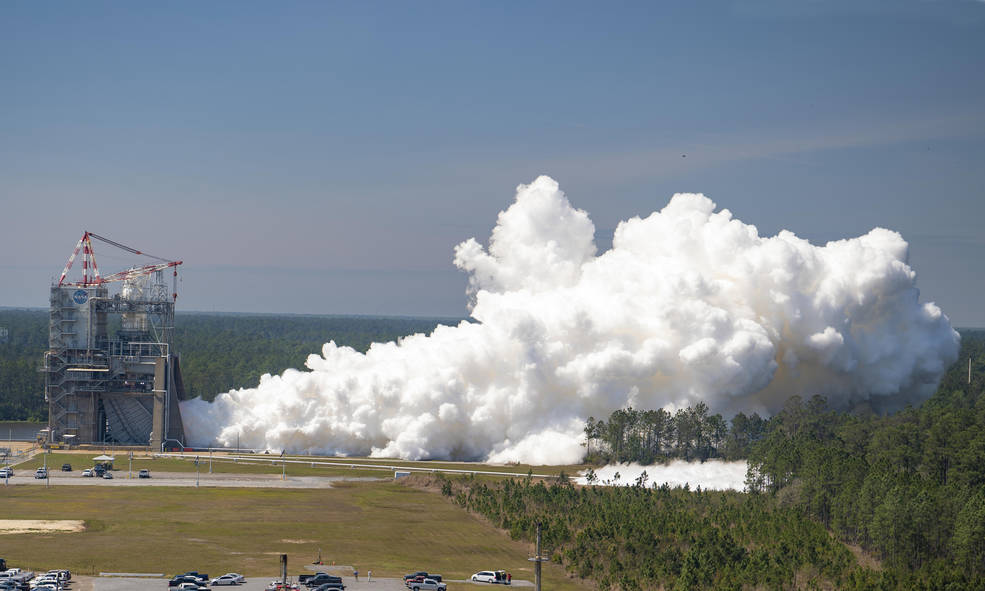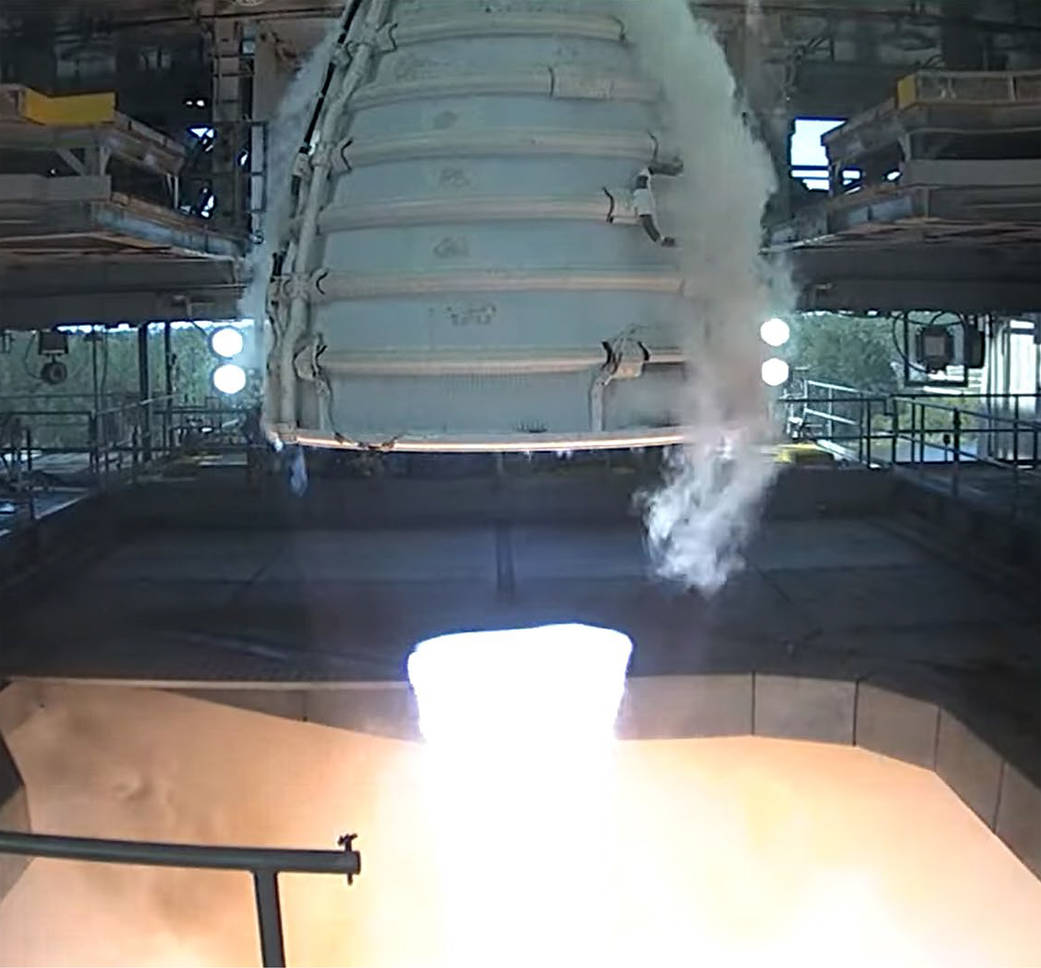As NASA prepares for the first crewed Artemis missions to the Moon, agency propulsion and test teams are setting their sights on future Space Launch System (SLS) flights and working to improve one of the world’s most powerful and reliable rocket engines for missions beginning with Artemis V.
A series of hot fire certification tests is in progress at NASA’s Stennis Space Center near Bay St. Louis, Mississippi, for a redesigned RS-25 engine to support production of additional engines for future SLS flights after NASA’s current inventory of the engine is expended.

Originally designed for the space shuttle, the RS-25 was selected to power the SLS rocket because of its high performance and demonstrated reliability over more than a million seconds of ground test and flight time.
“The RS-25 remains one of the most efficient, powerful, tested, and flight-proven first stage engines in the world,” said Johnny Heflin, SLS liquid engines manager. “When we made the decision to restart engine production, our main goal for the transition from the space shuttle to SLS was to make it at least 30% more affordable while increasing operational thrust from 109% to 111%. We needed to re-engineer the RS-25 for Artemis missions while retaining the basic design and performance.”
Four RS-25 engines power each SLS core stage, producing more than 2 million pounds of combined thrust during the eight-minute climb to orbit. At the end of the Space Shuttle Program, NASA and Aerojet Rocketdyne, the RS-25 lead contractor, had 16 remaining engines. Beginning in 2015 with a series of hot fire tests on a pair of shuttle-era ground test engines, the engine team adapted the existing shuttle inventory to the SLS rocket’s unique operating requirements for its initial deep space missions by adding engine nozzle insulation and developing a new controller to replace the obsolete shuttle engine controller.
Beginning with Artemis V, the SLS rocket will feature newly produced RS-25 engines from Aerojet Rocketdyne’s restarted production line. These new engines benefit from streamlined production facilities and processes, including new materials.

The main combustion chamber for the engine employs a modern bonding process. Flex joints were replaced with easier-to-produce flex hoses. Engineers have simplified parts and manufacturing processes, eliminating more than 700 welds, while state-of-the-art technologies like 3D printing and structured light scanning have saved both time and money. With those changes came the need for hot fire testing.
“The RS-25 has an incredible history of success, but it’s important to test fire the re-engineered hardware to validate new designs, manufacturing lines, processes, and materials when they all come together in an engine,” said Chip Ellis, R-25 project manager at Stennis.
With production on the new engines in full swing, the new design has one more hurdle: the series of hot fire tests to certify the design for flight. Engineers plan to certify the engine through the series of 12 starts and 6,150 seconds of hot fire time, most of it occurring at the planned 111% power level. They also will be tested at power levels ranging from 80% to 113% power to satisfy engine throttling verification requirements.
“This certification test series is the culmination of years of hard work by hundreds of people across Aerojet Rocketdyne, NASA and our suppliers,” added Doug Bradley, RS-25 program director at Aerojet Rocketdyne. “This certification program has had teams across the nation restart production lines, inaugurate new suppliers, and prove out new manufacturing techniques that reduce both the cost and cycle time for manufacturing each engine.”
While a checkout test ended early due to a test stand setting, the first four of 12 formal certification runs have so far collected data from 2,220 seconds of operating time. Each test has met or exceeded the 500 seconds the SLS engines would operate during a typical launch. The remaining tests will continue through June. A follow-on hot fire test series with a second certification engine will begin this summer and continue through the fall to gather additional data.
With Artemis, NASA will land the first woman and the first person of color on the lunar surface and establish long-term exploration and science capabilities at the Moon in preparation for human missions to Mars. SLS and NASA’s Orion spacecraft, along with the human landing system and the Gateway in orbit around the Moon, are NASA’s foundation for deep space exploration.
For more on NASA SLS visit:
Corinne Edmiston
Marshall Space Flight Center, Huntsville, Ala.
256.544.0034
corinne.m.edmiston@nasa.gov





























